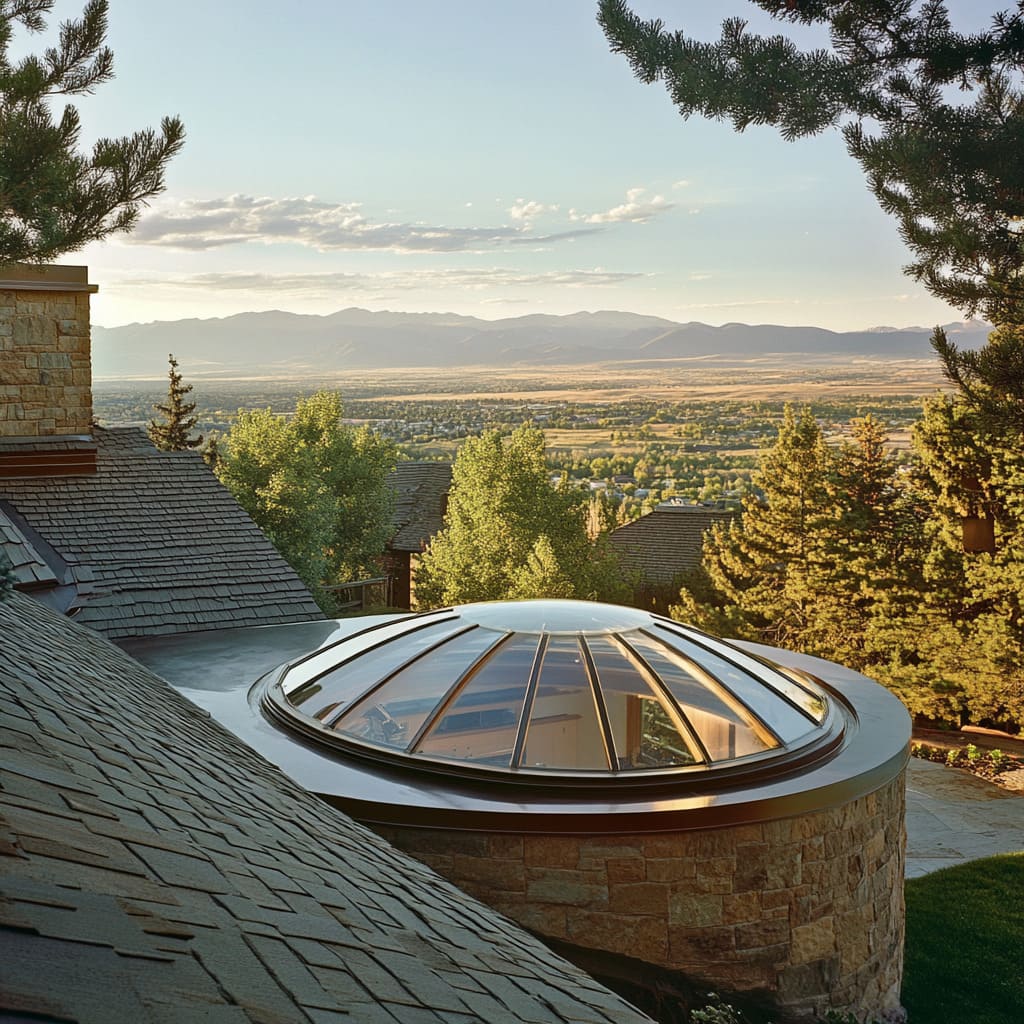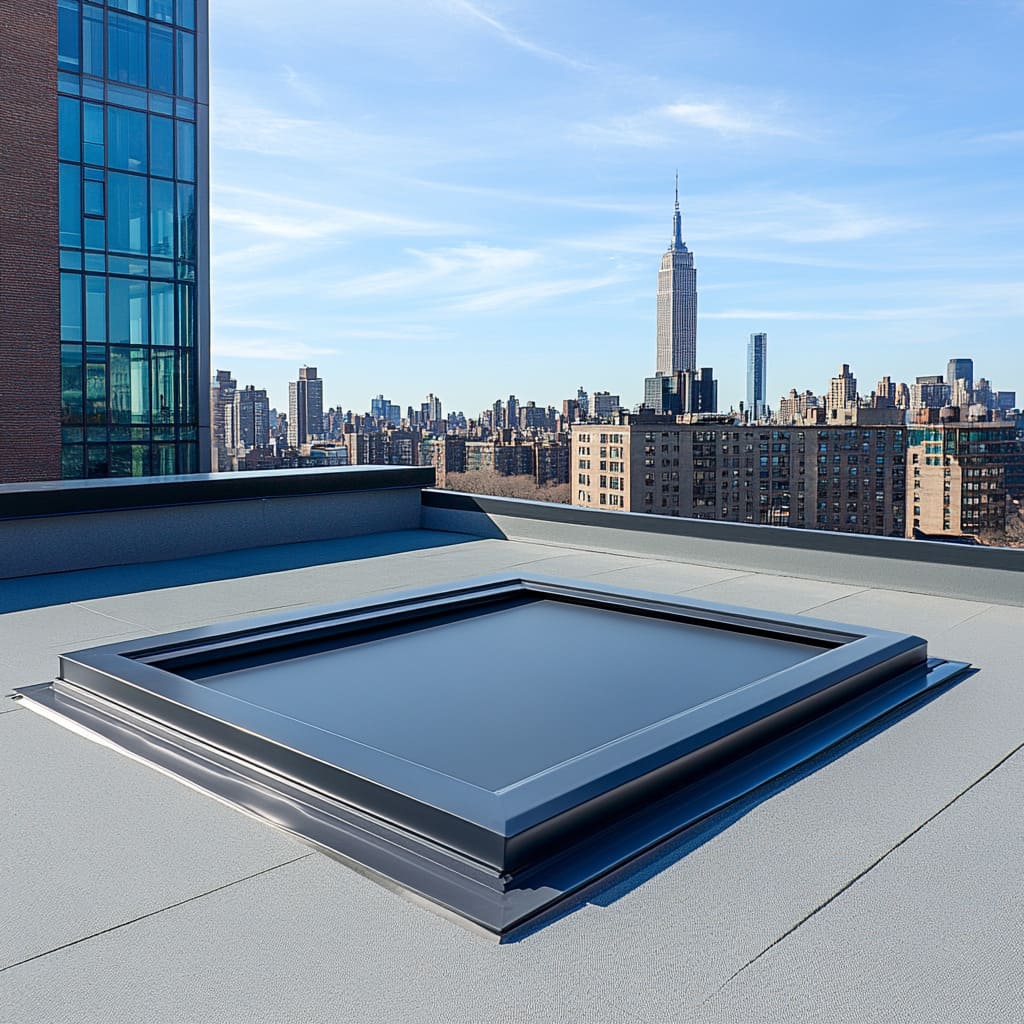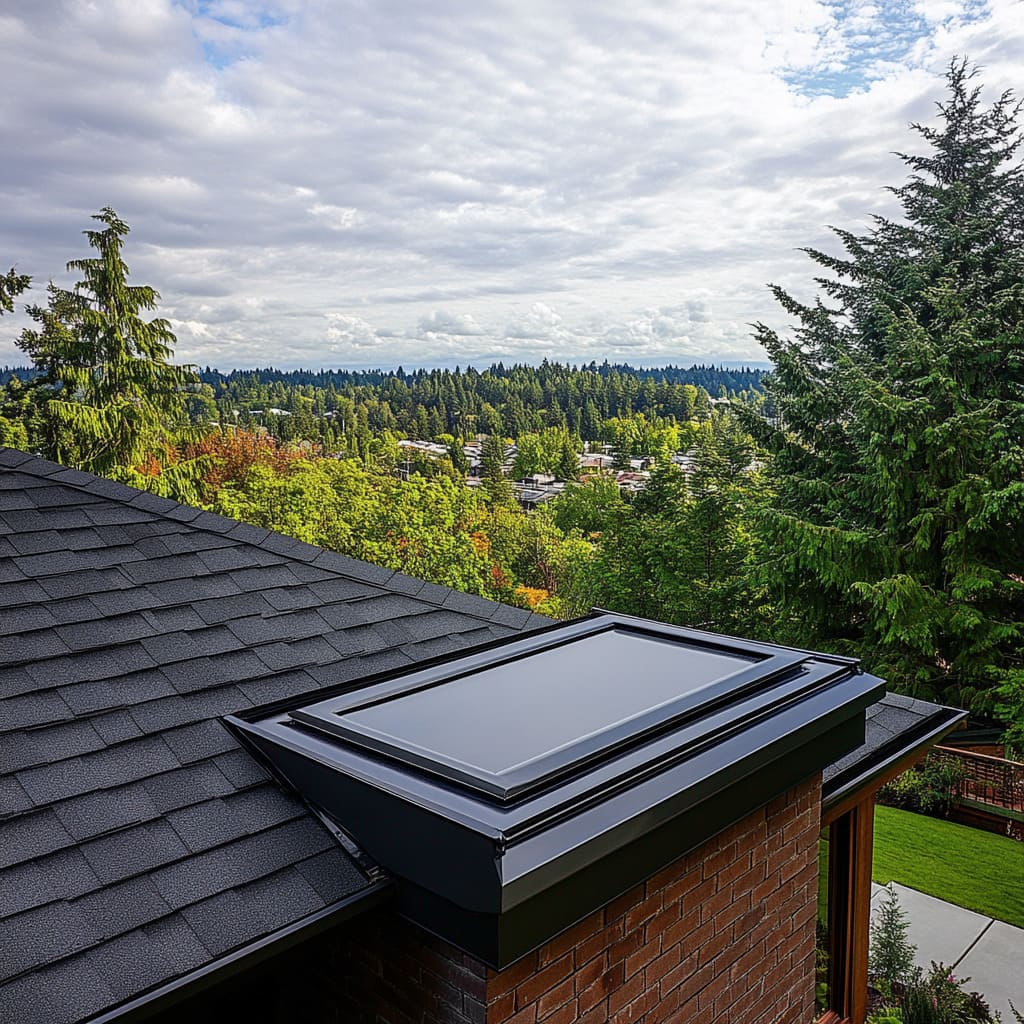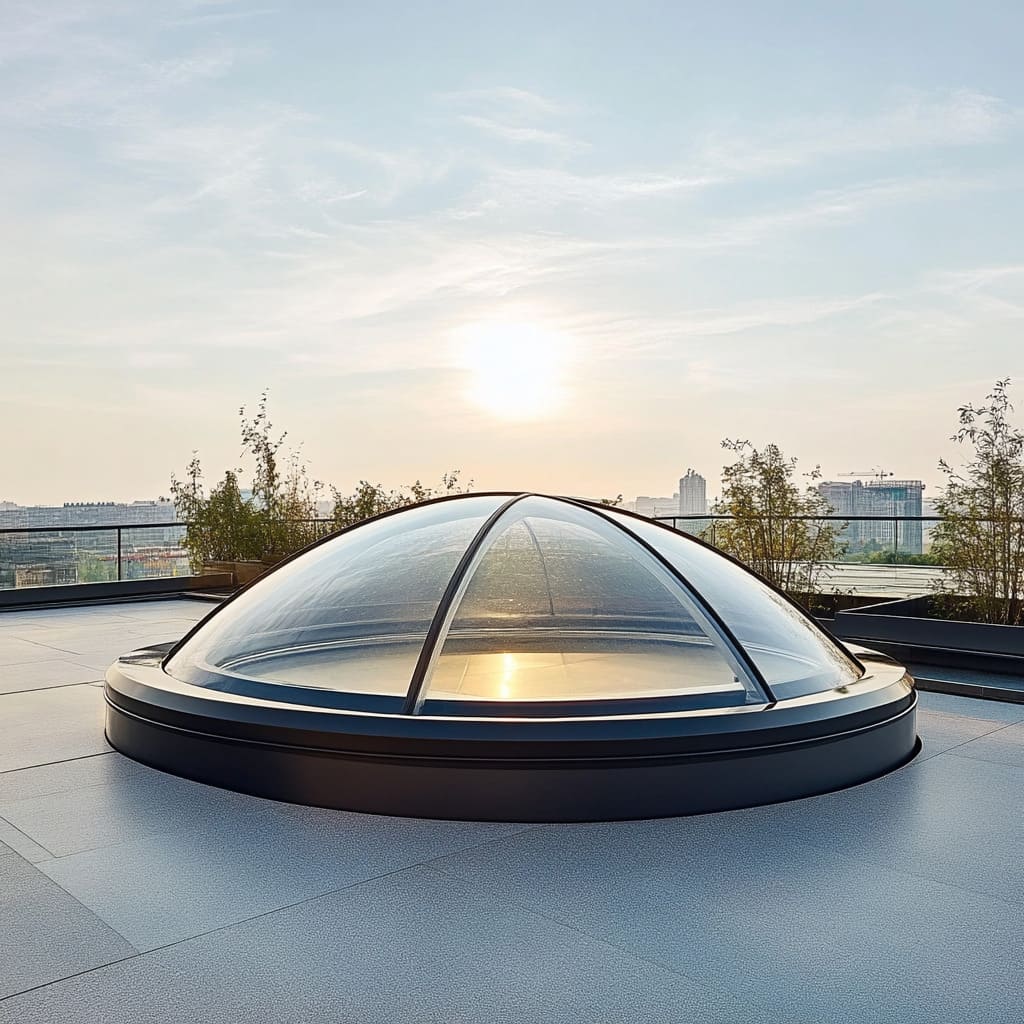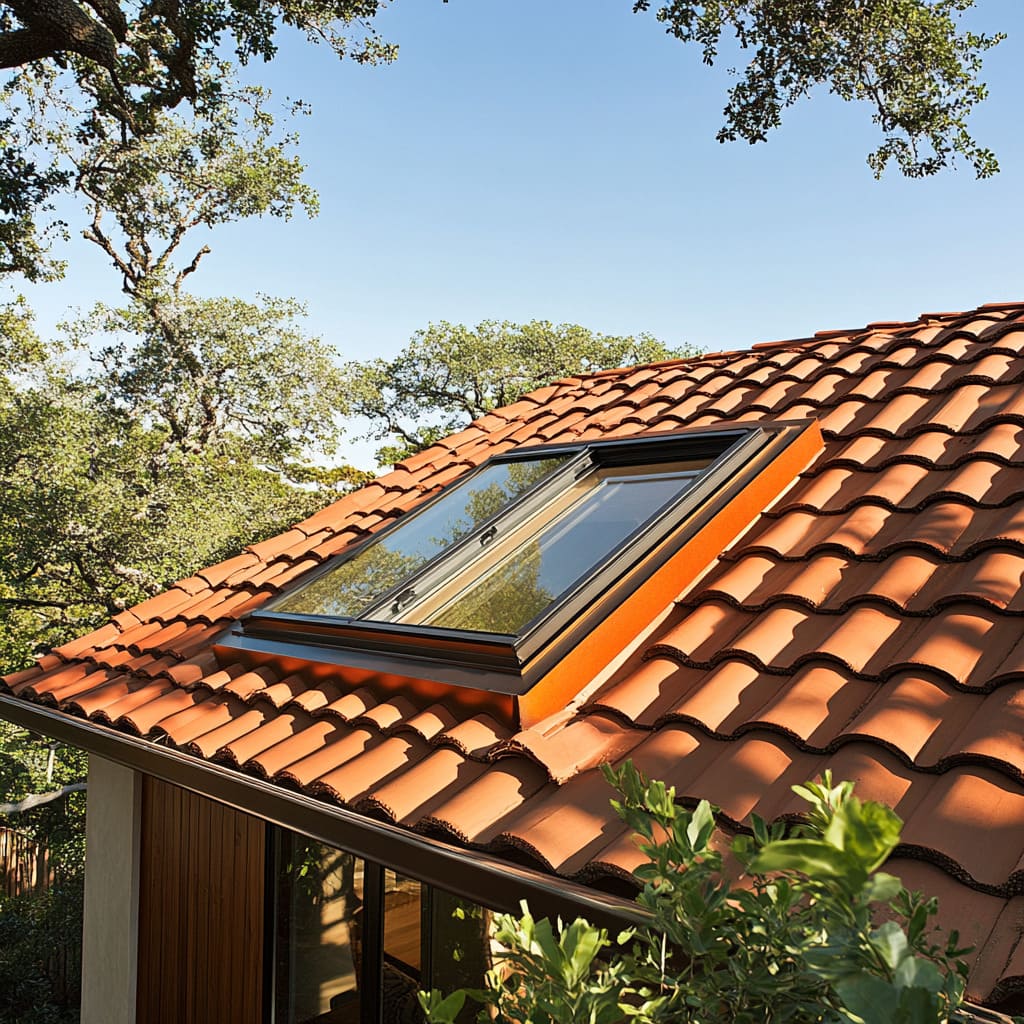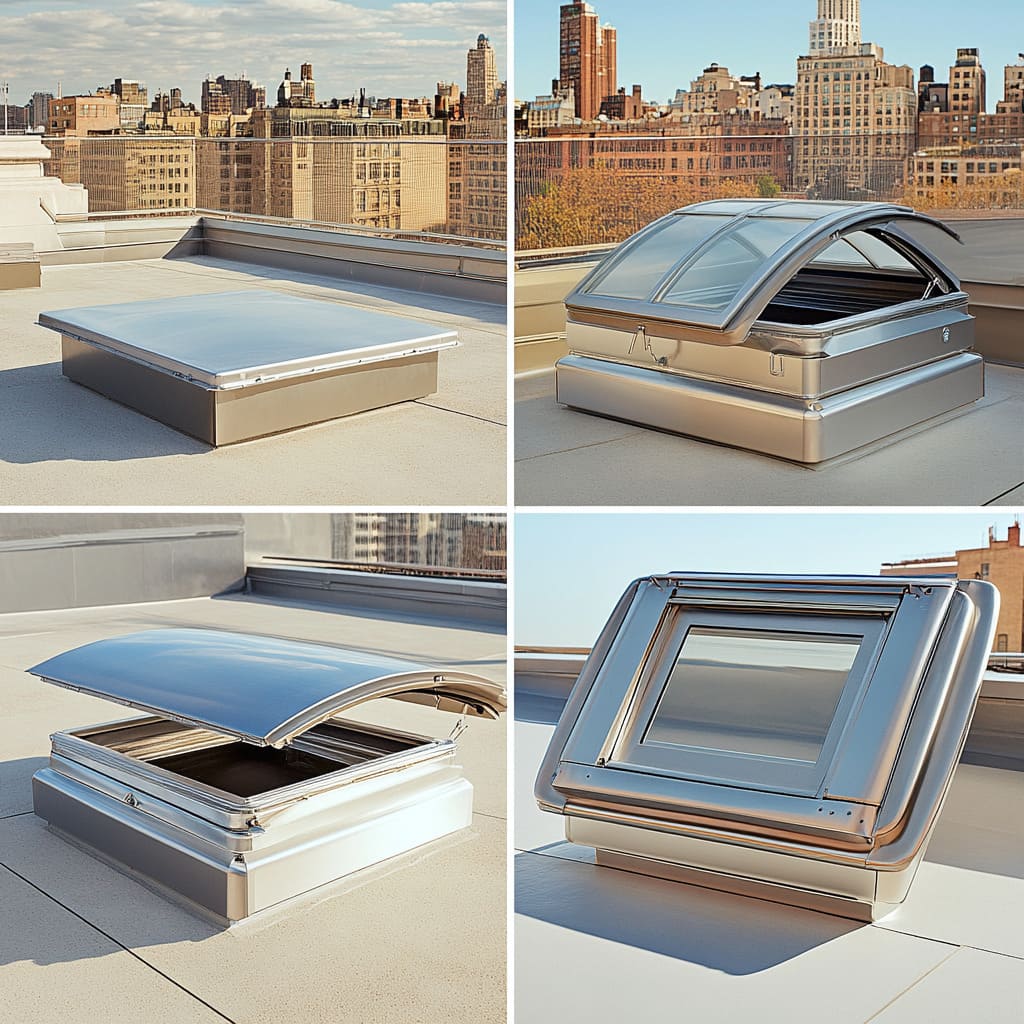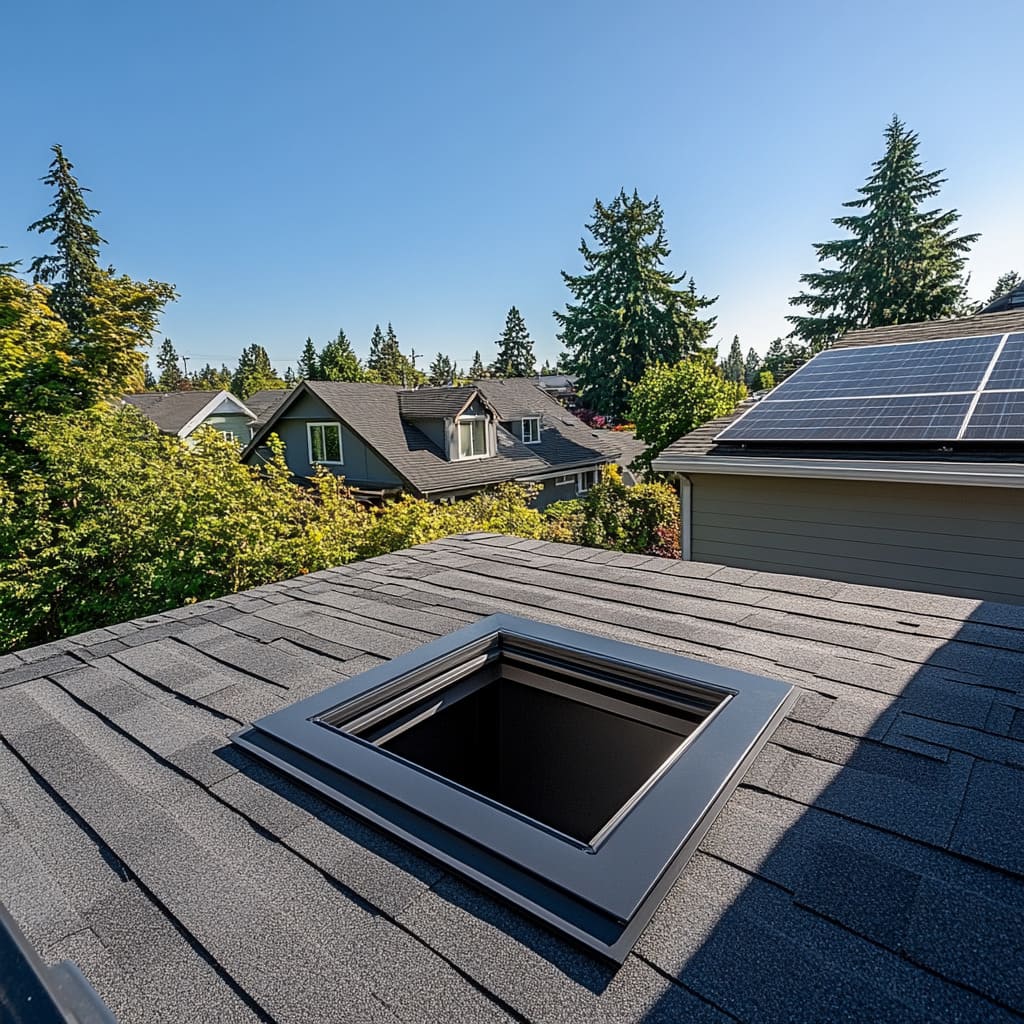Imagine this: You are standing atop a tall commercial building. The sun blazes, the wind howls, and the view is stunning.
But your attention shifts to the visible roof damage that disrupts the scene. A roof hatch door helps address the issue by providing secure access for repairs, supporting the building’s long-term protection and aesthetic appeal.
Why Roof Hatch Doors Matter More Than You Think
Roof hatches serve as essential access points on the roof. They are crucial for maintenance, safety, and emergency egress.
Here are more reasons why they are indispensable:
- Safe and Efficient Access: Roof hatch doors offer a versatile rooftop safety and efficiency solution. These doors significantly reduce the risk of falls by providing controlled access. They streamline maintenance by enabling easier inspections and repairs, preserving roof integrity. In emergencies, they can serve as a vital escape route, providing a safe and reliable means of exit.
- Enhanced Security: A high-quality roof hatch door with robust locking mechanisms deters unauthorized access and safeguards valuable equipment stored on the roof. This dual protection ensures that the property and belongings stay secure.
- Improved Energy Efficiency: Modern roof hatch doors with insulated covers help reduce energy loss and lower utility bills. By minimizing heat loss or gain, these covers help lower utility bills, promoting savings and sustainability.
- Durability and Longevity: Roof hatch doors offer longevity and energy efficiency. They are made from durable materials and engineered to resist harsh elements. Many modern models also include insulated covers for added energy savings. With regular care, these doors provide a long-lasting, affordable solution for roof access.
- Improved Aesthetics: Roof hatch doors can enhance the overall appearance of a building. With various designs and finishes available, they can blend seamlessly with the roofline or complement the structure’s architectural style. An aesthetically pleasing roof hatch door not only improves the visual appeal but can also increase the property’s value, making it a smart investment.
Types of Roof Hatch Doors
The right roof hatch door for your building depends on specific needs and requirements. Here are some common types:
- Aluminum roof hatch doors are lightweight, highly resistant to corrosion, and cost-effective.
- Domed roof hatches offer improved visibility and natural light, making them suitable for areas requiring frequent inspections.
- Roof hatches with electric actuation provide convenient and effortless opening and closing, especially for heavy or frequently used hatches.
- Security roof hatches have advanced features like reinforced frames, heavy-duty locks, and tamper-resistant mechanisms.
Choosing the Right Roof Hatch Door
When selecting a roof hatch door, consider the following technical specifications and factors:
Load Capacity
A crucial factor to consider is the maximum weight a roof hatch door can support, including equipment and personnel accessing the roof.
- Aluminum: While lighter than other materials, aluminum offers sufficient load ability for most applications, making it suitable for lighter loads and less demanding environments.
- Galvanized steel: This material provides excellent strength and durability for heavy-duty use in commercial and industrial buildings.
- Stainless steel: The material’s exceptional corrosion resistance makes it perfect for coastal or industrial settings. It offers outstanding durability and longevity.
Insulation Rating
The insulation rating of a roof hatch door, measured in R-value, shows its ability to resist heat transfer. A roof hatch door with a high R-value improves overall insulation and reduces energy costs.
Consider the region’s climate to pick the right insulation level. Opt for a roof hatch door with a high R-value to minimize heat loss in cold temperatures.
Dimensions
To ensure proper fit and functionality:
- Consider the overall size of the roof hatch door, including both the opening and frame dimensions.
- Choose a large door to accommodate needs, such as equipment access or personnel movement.
- See that the frame dimensions are compatible with the roof structure to ensure seamless installation.
Opening Mechanism
You can use roof hatch doors manually, hydraulically, or electrically.
- Manual operation requires physical effort and is suitable for smaller, less often-used hatches.
- Hydraulic systems offer smooth and effortless opening and closing, which is ideal for larger, heavier hatches or areas with high traffic.
- Electric actuation provides convenient, remote-controlled operation for buildings requiring accessibility or frequent use.
Security Features
For enhanced security, go for roof hatch doors with robust locking mechanisms to deter unauthorized access. Consider other tamper-resistant features like reinforced frames or tamper-proof screws to safeguard the property further.
Fire Rating
To comply with local building codes, ensure the roof hatch door meets the required fire rating. Consult local regulations to figure out the proper level of fire protection and select a door that meets these standards.
Building Size and Usage
When selecting a roof hatch door, consider the size and type of the building, local building codes, and specific maintenance needs. Choose a roof hatch door that is spacious enough for specific needs, meets local regulations, and provides easy access for routine inspections and maintenance.
Find the best value by setting a budget and selecting a hatch with the right features.
Cost Considerations
The cost of a roof hatch door can vary depending on several factors, including:
- Material: Stainless steel doors are more expensive than aluminum or galvanized steel.
- Size:Larger doors tend to be more expensive than smaller ones.
- Features: Additional features like insulation, electric actuation, and enhanced security can inflate the overall expense.
- Installation: Obtaining quotes from multiple installers can help ensure the best price for roof hatch installation, considering the project’s complexity and location.
Essential Safety Tips for Rooftop Access
Safety should always be a top priority, even with a reliable roof hatch door. Here are some essential tips:
- Proper Training: Ensure everyone involved in rooftop work is adequately trained in safety.
- Use Safety Equipment: Wear safety gear like harnesses, helmets, and gloves.
- Inspect the Hatch: Inspect the hatch for any damage or defects before accessing the roof.
- Be Aware of Weather Conditions: Avoid rooftop access in hazardous conditions for safety.
- Practical Uses of Roof Hatch Doors
You can use roof hatch doors successfully to improve overall safety and efficiency in various settings. Here are some examples:
- Commercial Buildings: Great for maintenance, inspections, and emergency egress.
- Industrial Facilities: Ideal for equipment access, ventilation, and safety.
- Residential Buildings: Installed for attic access, solar panel installation, and emergency escape.
- Data Centers: Used for equipment access and enhanced ventilation.
- Telecommunications Towers: Utilized for maintenance and equipment access.
Applications
Commercial buildings with solar panels benefit from roof hatch doors. These solar panels need regular maintenance and inspections, and a roof hatch door provides safe and efficient access for technicians.
This simplifies the process and helps protect the building’s structural integrity. Roof hatch doors can also serve as secondary emergency escape routes, particularly in multi-story apartment buildings.
For instance, a building needing added egress points could install roof hatch doors on the top floor. This provides residents with a safe alternative exit in case of fire or other emergencies.
Key Takeaways and Conclusion
Like other types of access doors and panels, roof hatch doors are indispensable for safeguarding commercial and residential buildings.
The right roof hatch can enhance safety, promote efficiency, and protect investment. This versatile tool offers a secure and convenient solution for rooftop access, making it an essential part of any well-maintained building.
When choosing a roof hatch door, consider the material, size, insulation, opening mechanism, security features, fire rating, and budget. By carefully evaluating these factors, you can select the perfect roof hatch to meet specific needs.

